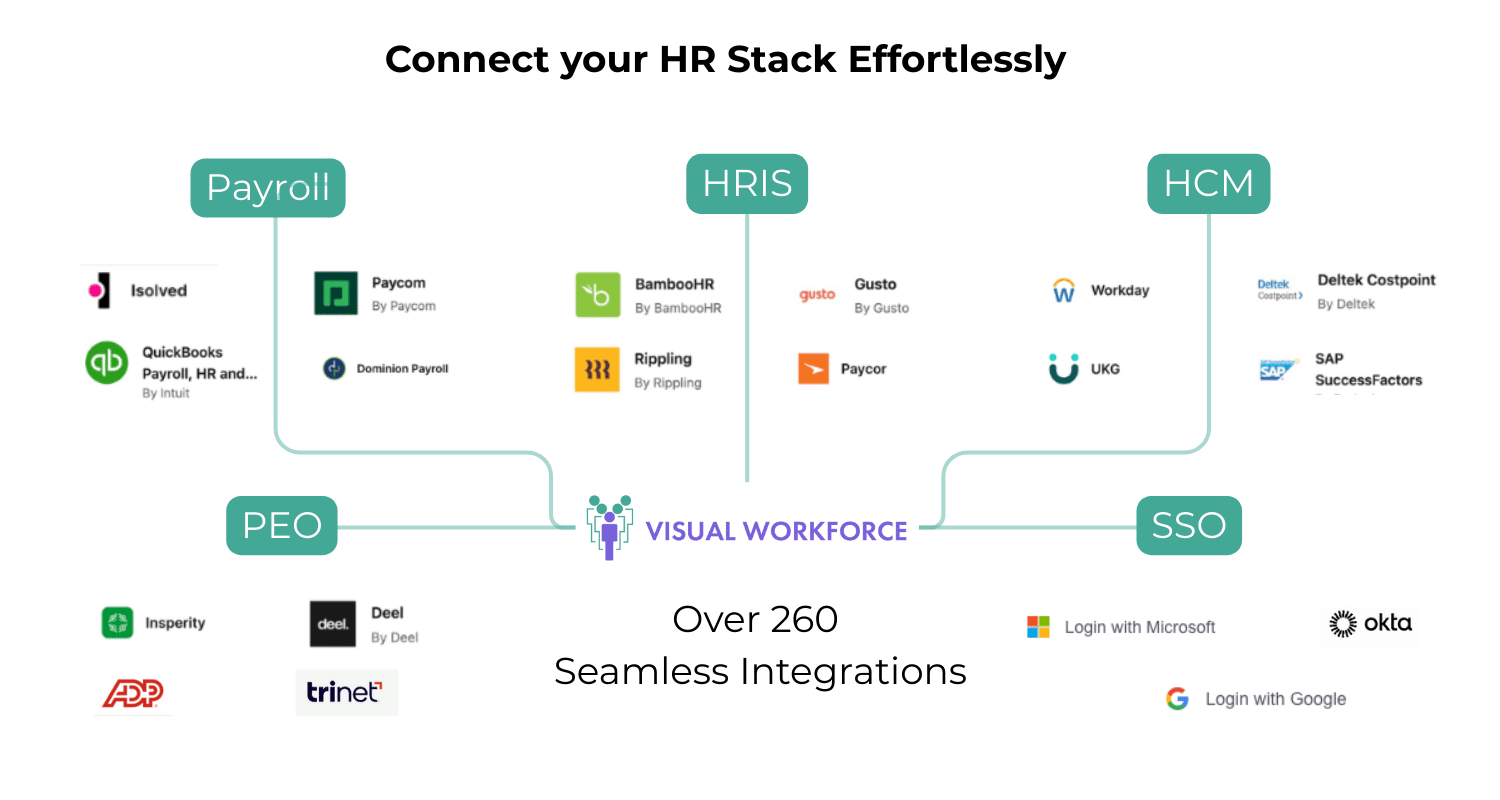Why You Should Invest In Skills Planning
Business leaders are rapidly adopting new technologies and automation to drive greater operational efficiencies and gain a competitive edge. Alongside these changes, we're witnessing a significant shift in the skills required to thrive in this digital environment, resulting in a growing skills gap across many industries.
The Growing Importance of Skills Planning
According to the World Economic Forum's Future of Jobs Report 2023, 44% of workers' skills are expected to be disrupted in the next five years. This staggering statistic underscores the urgent need for proactive skills planning.
The impact of this skills disruption is already being felt by business leaders. PwC's 27th Annual Global CEO Survey reveals that "availability of key skills" has moved from 5th to 3rd among issues CEOs perceive as threats to organizational growth. This concern is well-founded, as 60% of U.S. employers report job openings that remain vacant for 12 weeks or longer, costing businesses up to $800,000 annually.
The Shift Towards Skills Based Organizations
To address these challenges, forward-thinking companies are transitioning to skills based organizational models. This approach focuses on skills rather than traditional job roles, offering several benefits:
Enhanced Internal Mobility: By mapping skills across the organization, employees can more easily move between roles and departments, fostering career growth and retention.
Improved Talent Acquisition: Skills based hiring practices widen the talent pool and reduce bias in the recruitment process.
Agile Workforce Planning: Organizations can quickly adapt to market changes by reallocating skills where they're most needed.
Personalized Learning and Development: Employees can focus on acquiring skills that align with both their career aspirations and organizational needs.
Satya Nadella, CEO of Microsoft, highlights the importance of this shift: "We're moving from a world where we hire for credentials to one where we hire for skills and capabilities."
Best Practices for a Skills Based Organization
To successfully implement a skills based approach and support internal mobility, consider the following best practices:
1. Develop a Comprehensive Skills Taxonomy
Create a standardized skills language across your organization. This taxonomy should be dynamic, regularly updated to reflect emerging skills and industry trends.
2. Implement Skills Assessment and Tracking
Utilize advanced skills assessment tools to accurately map your workforce's capabilities. [Related Post: What Are The Business Benefits of Having a Skills Inventory?]
3. Foster a Culture of Continuous Learning
Encourage employees to engage in ongoing skill development. According to LinkedIn's 2023 Workplace Learning Report, 93% of organizations are concerned about employee retention, and robust learning and development programs can significantly impact retention rates.
4. Redesign Career Paths
Focus on skills based career progression rather than traditional, linear paths. This approach provides employees with more agency and opportunity as jobs evolve.
5. Leverage AI and Data Analytics
Employ AI-powered tools to identify skills gaps, predict future skill needs, and personalize learning recommendations for employees.
Dani Johnson, Co-founder and Principal Analyst at RedThread Research, notes: "Organizations that use data and analytics to understand their skills landscape are 3x more likely to innovate and 2x more likely to meet or exceed financial targets."
6. Align Skills Strategy with Business Objectives
Ensure your skills planning initiatives are directly tied to overarching business goals and strategies.
The Role of Technology in Skills Planning
To effectively manage and leverage skills data, organizations need robust technological solutions. Here are key features to look for:
Centralized Skills Database: House your skills inventory in an accessible, user-friendly system. [Related Post: 6 Steps to Use Visual Data to Build Effective Employee Growth Plans]
Real-Time Insights: Maintain a dynamic skills inventory that provides instant access to relevant data, enabling managers to make informed decisions quickly.
Powerful Visualizations: Utilize data visualization tools to easily interpret skills gaps and trends, facilitating more effective workforce planning.
Integration Capabilities: Ensure your skills planning solution can integrate with existing HR systems and learning platforms for a seamless experience.
AI-Powered Recommendations: Leverage AI to suggest personalized learning paths and internal opportunities based on an employee's current skills and career aspirations.
The Future of Work is Skills Based
As we look to the future, the importance of skills planning will only continue to grow. The World Economic Forum predicts that by 2025, 50% of all employees will need reskilling. Organizations that invest in robust skills planning initiatives now will be better positioned to navigate this changing landscape.
Ginni Rometty, former CEO of IBM, succinctly captures this sentiment: "If you have the right skills, you can participate in the future. If you don't, you're going to be left behind."
By embracing a skills based approach and investing in comprehensive skills planning, organizations can build a more agile, engaged, and future-ready workforce. This investment not only addresses the immediate challenges of the skills gap but also lays the foundation for long-term success in an increasingly dynamic business environment.
Are you ready to lead your company into the future of work? Invest in skills planning today and unlock the full potential of your workforce.
How are Companies Currently Tracking Skills and Capabilities?
To understand where we must go, we first need to look at how we are tracking skills and identifying gaps in our workforce today. Here are some of the common methods we see used today and why they don’t work:
Internal Networking. Managers talk with employees about their skills, experience, and education to gain insight on needed capabilities. For example, when a new project requires a niche skill, managers network internally to find out who may have that skill or if they’ll need to hire someone.
Why doesn’t this work?
Internal networking is a very ad-hoc approach to skills management. It places responsibility on the manager to hunt down relevant answers, consuming valuable time. This method doesn’t provide a consistent inventory of skills managers can access for instant answers.
Delegating Skills Tracking to a Different Department. We see business managers delegate skills tracking to entirely different departments that do not understand the intricacies of what makes their group successful.
Why doesn’t this work?
Other departments, like HR, will not be proficient in the requirements of your team. It’s not their role. Managers who delegate to others are devaluing the power of skills tracking. Understanding the current skills and capabilities of your workforce provides you the information necessary to build the best team to win new business opportunities.
Excel Spreadsheets. One of the most popular methods to track current skills is using spreadsheets. Managers leverage a combination of surveys and tables to collect and maintain data on their workforce.
Why doesn’t this work?
While the spreadsheet method appears cost efficient, it can become disorganized, time-consuming and out of date very quickly. Managers waste valuable time trying to collect, analyze data and pinpoint problems when they should be focusing on creating solutions.
Also, spreadsheets can only present static data points, making it very difficult to identify trends and anomalies. Business leaders draw conclusions from patterns recognized in data, not specific data points. Identifying gaps in your workforce is no different and spreadsheets do not provide easy-to-use tools for leveraging dynamic data.
Complex Enterprise Systems. Many organizations use an enterprise system like an ERP, HRIS, and LMS to manage and track various resources. Managers assume their enterprise system also has the capability to track skills, but come to find that these systems are not designed for in-depth analysis of your workforce.
Why doesn’t this work?
The challenge with enterprise systems is that they are expensive, complex, broad, and cumbersome to customize. Thus, enterprise systems can cause bottlenecks and confusion for managers who need to identify the right people with the right capabilities to make effective business decisions.
As you can see, these methods are often inefficient and lack the relevant answers managers need to drive successful business outcomes. We need a better way.
Invest in Skills Planning to Optimize Your Workforce and Drive Results
Skills planning is a deliberate, data-driven approach to managing the skills and capabilities of your workforce. This approach allows you to proactively identify skills gaps in your workforce and take immediate action. Skills planning allows you to capture new business opportunities, plan for transformation, and future-proof your business.
In short, skills planning allows you to plan instead of react.
Here are just a few things that a skills planning can help you achieve:
Plan for Sustainable Future Initiatives
Ensure a Smooth Digital Transformation
Build Dynamic Teams That Win Business and Get Results
Retain and Attract Experts To Elevate Your Competitive Advantage
How To Get Started With Skills Planning
Skills planning leverages a core tool called a skills inventory. What is a skills inventory? It’s a skills database that provides a snapshot of the current skills and capabilities of your workforce. A skills inventory helps you recognize skills gaps and provides a clear vision for how your workforce needs to change or grow.
Related Post: What Are The Business Benefits of Having a Skills Inventory?
Skills inventories are meant to be dynamic. As your company evolves so should your skills inventory. That way when the next business opportunity presents itself, you have a clear understanding of what your company is capable of achieving.
To develop an effective, dynamic skills inventory, you should strive to have these 3 characteristics.
Skills Inventory:
1 | Use a Centralized System
Avoid disorganization and inefficiencies by housing your skills inventory in a centralized, accessible system. Employees should be able to access their surveys and results easily and managers shouldn’t need to hunt down answers. The goal of a skills inventory is to provide data at the fingertips of managers so they can make instant, informed decisions.
2 | Provide Instant Access To Relevant Insights
You should maintain a dynamic skills inventory that provides instant access to relevant answers. Managers can make future decisions based on living and breathing data rather than historical, static data. They can plan for expansion and win more business all by having accurate, current information at their fingertips.
3 | Leverage the Power of Visualizations
While spreadsheets provide an organized repository for data, managers must be able to easily interpret that data to make timely business decisions. Sorting through rows of ratings and analyzing tables in Excel can be complex and time-consuming.
Visualizations empower your managers to easily and quickly interpret gaps so they can spend more time developing great solutions and driving action. Visualizations are also dynamic. You can identify changes more easily, so not only can you track your employees' skills but their growth as well.
Related Post: 6 Steps to Use Visual Data to Build Effective Employee Growth Plans
The skills gap will continue to grow and threaten the current success of many organizations as we move further into the age of digital transformation. How business leaders address and prevent these gaps within their own workforce will in large part determine the future success of their organization. As the way we work changes, so should our approach optimizing our workforce. Lead your company into the future of work, by Investing in skills planning today.
Ready to invest in the future of your workforce?
Learn how Visual Workforce can help you discover and optimize the skills and capabilities of your people, teams, and projects.








